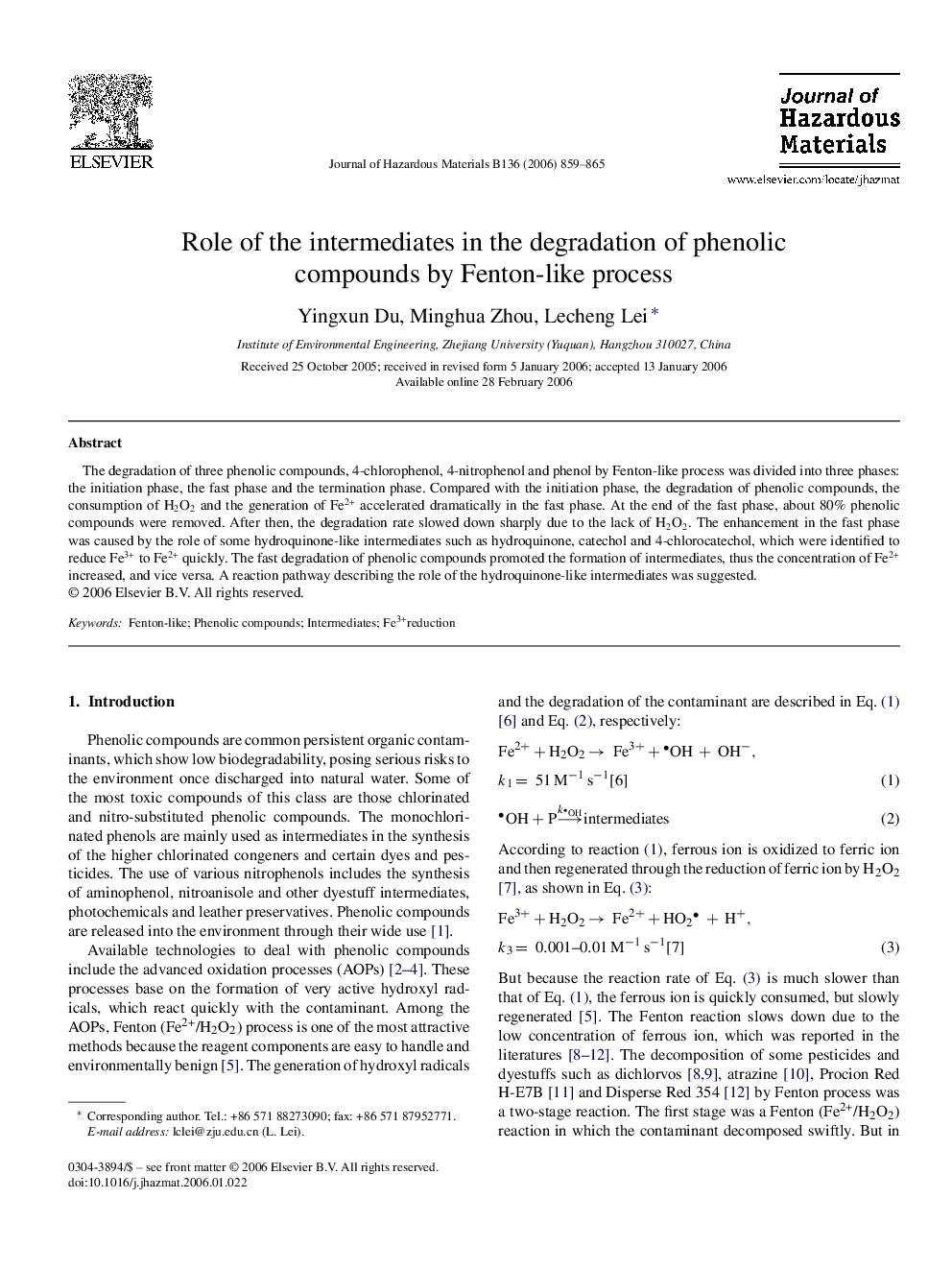| Article ID | Journal | Published Year | Pages | File Type |
|---|---|---|---|---|
| 585609 | Journal of Hazardous Materials | 2006 | 7 Pages |
The degradation of three phenolic compounds, 4-chlorophenol, 4-nitrophenol and phenol by Fenton-like process was divided into three phases: the initiation phase, the fast phase and the termination phase. Compared with the initiation phase, the degradation of phenolic compounds, the consumption of H2O2 and the generation of Fe2+ accelerated dramatically in the fast phase. At the end of the fast phase, about 80% phenolic compounds were removed. After then, the degradation rate slowed down sharply due to the lack of H2O2. The enhancement in the fast phase was caused by the role of some hydroquinone-like intermediates such as hydroquinone, catechol and 4-chlorocatechol, which were identified to reduce Fe3+ to Fe2+ quickly. The fast degradation of phenolic compounds promoted the formation of intermediates, thus the concentration of Fe2+ increased, and vice versa. A reaction pathway describing the role of the hydroquinone-like intermediates was suggested.
